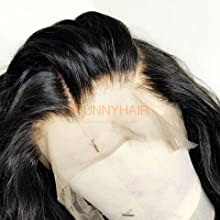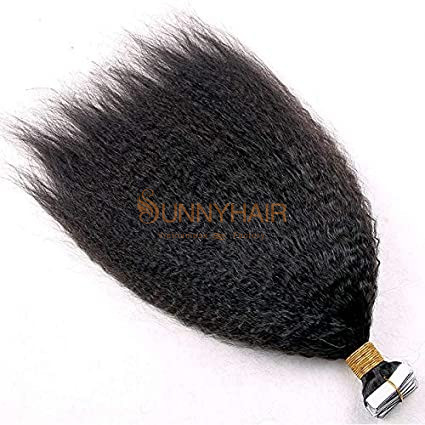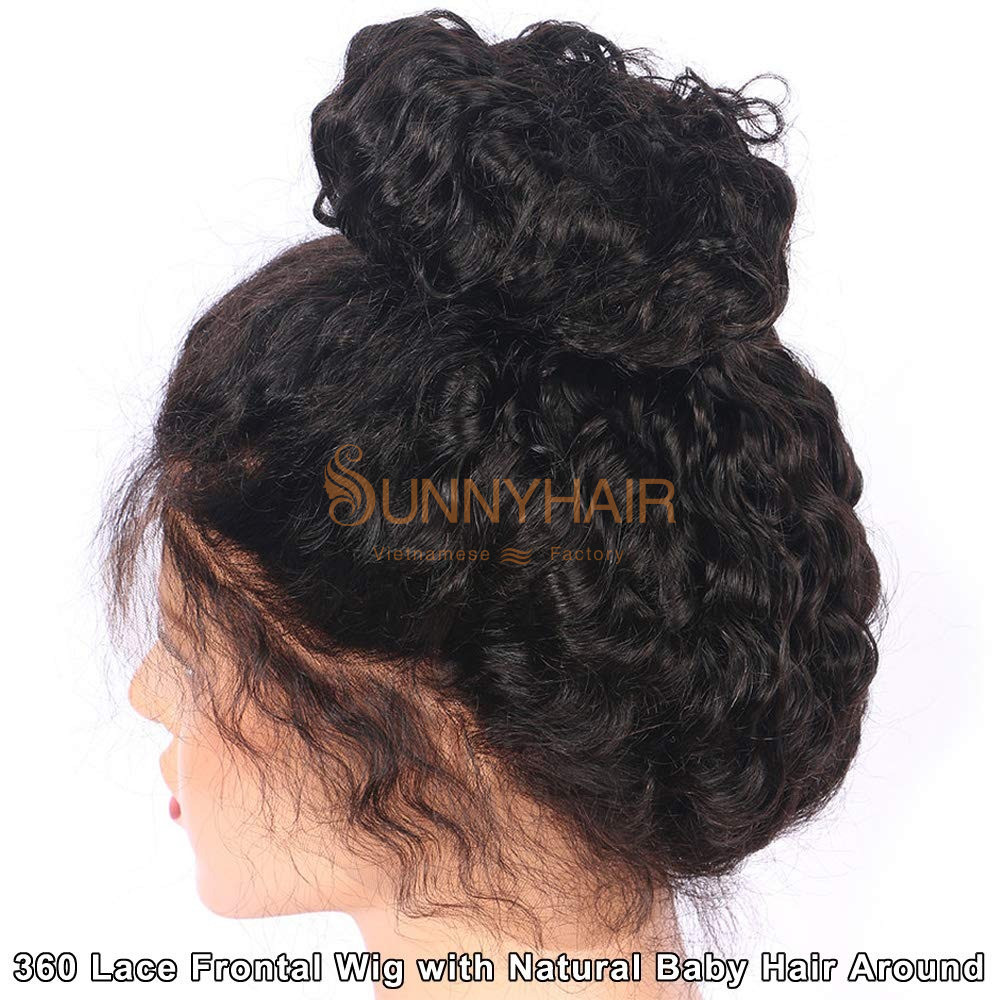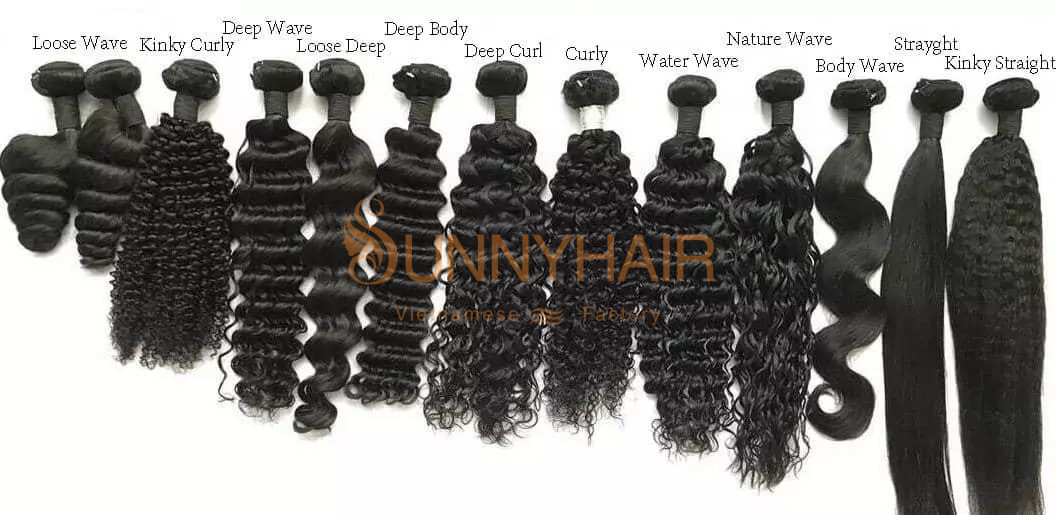Hand-Tied Weft Extensions Wholesale Guide 2025
The global hair extension market is still growing in 2025. This growth is driven by a demand for natural beauty, personalized products, and sustainable materials. Hand-tied weft extensions are a popular choice for stylists and distributors. They are loved for their smooth look and comfortable fit.
This guide will help you understand the wholesale hand-tied weft market. It covers how they are made and how to choose the right suppliers. This way, you can make better and more informed sourcing decisions. .
How Hand-Tied Wefts Are Made: Process & Craftsmanship
To truly understand the value behind these products, let’s explore how hand-tied weft extensions are crafted—a process that combines precision, artistry, and skilled labor.
Hand-tied wefts are created through a delicate, mostly manual process that combines skill, patience, and attention to detail. Each weft begins with high-quality human hair that has been carefully sorted to ensure consistent color, texture, and direction of the strands.
Once the hair is prepared, skilled artisans take small, even sections and tie them by hand onto a thin but durable thread. This step-by-step knotting process can take several hours for just one weft, but it ensures the final product is flat, flexible, and incredibly natural-looking.

Crafted by hand, perfected by skill, every strand tells a story
Unlike machine wefts, hand-tied wefts have no bulky seams or glue. The result is a lightweight extension that lays flat against the scalp, blends seamlessly with natural hair, and feels comfortable even during long wear. Because of the precision involved, every hand-tied weft is slightly unique—reflecting the craftsmanship and care that go into its creation.
This combination of artistry and technique is what makes hand-tied wefts a premium choice for stylists and clients who value both beauty and comfort.
Step-by-Step Process
- Hair Collection & Sorting – Premium human hair, often Remy-grade, is collected and carefully sorted by length and texture.
- Cleaning & Alignment – Each strand is washed, sanitized, and aligned to ensure all cuticles face the same direction, preventing tangling.
- Hand Tying Technique—Skilled workers manually tie small sections of hair onto a fine thread base. This creates an ultra-thin, flexible weft that lies flat on the scalp.
- Quality Inspection—Every bundle undergoes multiple quality checks to confirm durability, uniform thickness, and color accuracy.
The result is a luxurious, soft, and long-lasting weft that blends naturally and can be layered for added volume without bulk.
What’s the difference: Hand-Tied vs. Genius Weft vs. Machine Weft
After understanding how hand-tied weft extensions are made, it’s essential to compare them with other weft types available on the market. Choosing the right type of weft depends on how natural you want the result to look, how much flexibility you need during installation, and your budget.
|
Feature |
Hand-Tied Weft |
Genius Weft |
Machine Weft |
|
Production Method |
Made completely by hand — hair is tied onto a thin thread by skilled artisans. |
Made with advanced technology combining hand and machine techniques. |
Created fully by machine using a sewing process. |
|
Thickness |
Very thin and flat. |
Slim and flat in shape |
Denser and a bit bulkier along the seam. |
|
Flexibility |
Extremely flexible, conforms easily to the scalp. |
Highly flexible, can be customized and cut freely. |
Less flexible, but sturdy and easy to handle. |
|
Cutting |
Cannot be cut (will unravel). Must use full or folded wefts. |
Can be cut anywhere without shedding or fraying. |
Can be cut easily to fit any head shape. |
|
Durability |
Delicate, requires careful handling. |
Strong and long-lasting due to reinforced stitching. |
Very durable and strong. |
|
Look & Feel |
Most natural appearance; seamless and lightweight. |
Natural-looking and soft; slightly more structure. |
May feel heavier; can look less natural on fine hair. |
|
Comfort |
Very comfortable; feels light on the scalp. |
Comfortable; smooth finish. |
Heavier, may cause tension on thin hair. |
|
Best For |
Clients want the most natural, luxury result. |
Stylists who want flexibility and durability in one. |
Budget-conscious users or thick-haired clients. |
|
Price Range |
Premium |
Mid to high range |
Most affordable |

Compare the wefts – find the perfect fit for your clients.
In short, hand-tied weft extensions remain the go-to choice for premium salons looking for a soft, discreet finish, while genius wefts offer a balance between thinness and durability. Machine wefts, on the other hand, are ideal for bulk or entry-level wholesale buyers due to their lower cost and easier scalability.
Hand-Tied Weft Extensions Demand in the US, EU, and Australia
Before diving into production or sourcing, it’s important to understand why hand-tied wefts are in such high demand in key global markets.
Rising Demand in the US
In the United States, salons and stylists are driving the surge in hand-tied wefts. American consumers favor extensions that look natural, feel lightweight, and cause minimal damage to the scalp. The “lived-in luxury” hair trend continues, pushing stylists to use thinner, more discreet wefts for layered looks.
Strong Growth in the EU
Across Europe, ethical and sustainable sourcing are top priorities. Consumers are more conscious about origin and transparency, preferring extensions that are traceable and responsibly collected. European distributors are increasingly sourcing from verified factories in Vietnam and India to ensure consistent quality and ethical standards.
Steady Expansion in Australia
Australia’s salon industry values flexibility and versatility. The country’s humid climate and active lifestyle make hand-tied weft extensions ideal, as they offer a breathable, lightweight option. Australian importers are expanding partnerships with Asian manufacturers to ensure quick turnaround and lower shipping costs.
Together, these regions are setting global trends, shaping how manufacturers and suppliers adjust their production and quality standards.
How to Choose a Reliable Hand-Tied Weft Supplier
Once you understand the market and supply chain, the next step is identifying a trustworthy supplier. Not all manufacturers offer the same level of consistency or service—here’s what to look for.
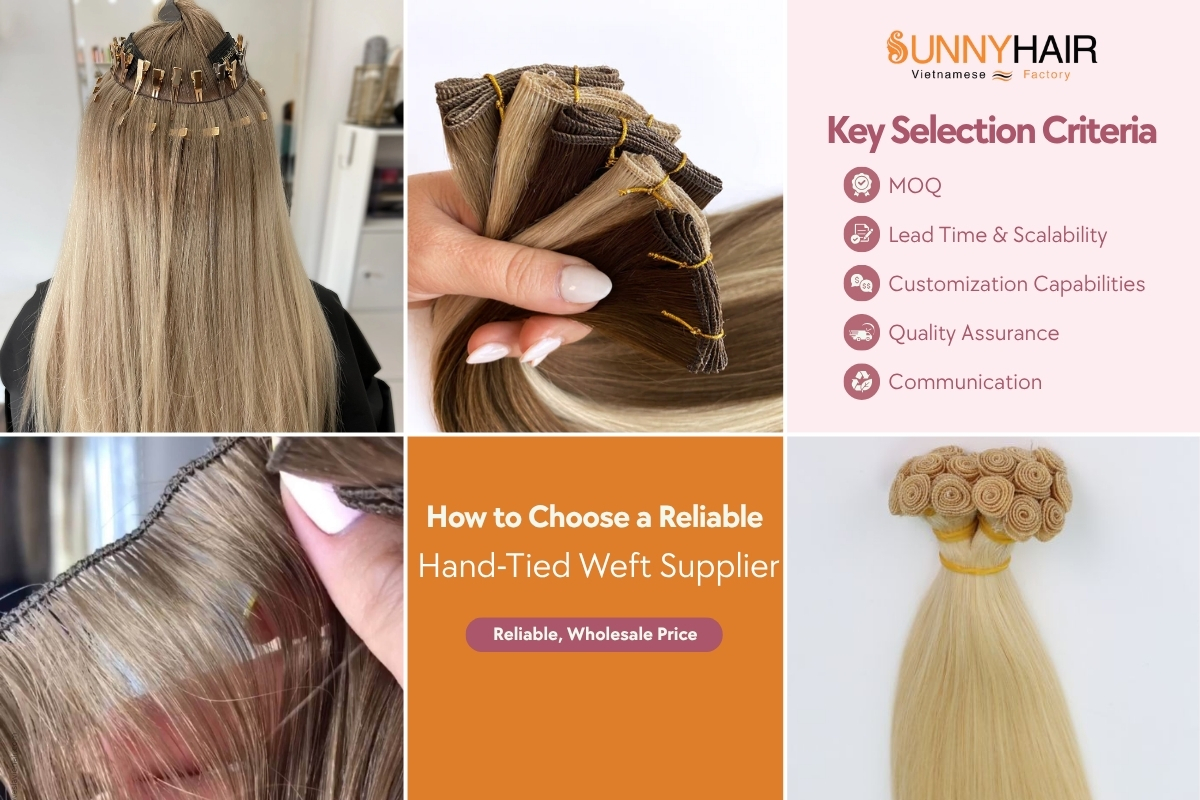
Choose partners who deliver quality, consistency, and trust
Key Selection Criteria
To find the best suppliers, you can consider some criteria as follows:
- MOQ (Minimum Order Quantity)—Choose suppliers offering flexible MOQs that fit your business model. A good range for hand-tied wefts is usually 1–5 kg for first orders.
- Lead Time & Scalability – Reliable suppliers typically deliver within 10–20 days for standard orders, with the ability to scale production during peak demand.
- Customization Capabilities—The best partners can provide color matching, custom lengths, and unique density per bundle.
- Quality Assurance & Communication—Transparent communication, detailed product specs, and real-time order tracking are key trust factors.
Avoid Common Pitfalls
Be cautious of suppliers offering prices that seem “too good to be true.” Low-cost wefts often come with quality inconsistencies or mixed hair sources. Always request hair extensions samples before placing large wholesale orders. Choosing the right supplier not only ensures product quality but also strengthens your long-term business growth.
Another articles:
- Top 10 Raw Hair Vendors Worldwide and Key Facts
- I Tip Hair Extensions
- Top 10 Style Ash Blonde Hair Colors That You Know
- Clip-in Hair Extensions
- Hair Length Chart
Conclusion
The hand-tied weft extensions market is evolving rapidly in 2025, shaped by consumer trends, manufacturing innovation, and sustainable sourcing. For wholesalers and salons, success lies in balancing quality, customization, and supplier reliability.








